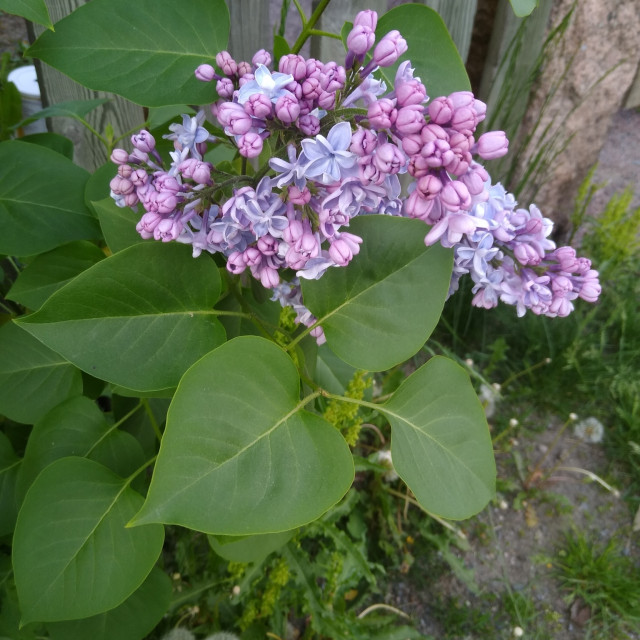COMMON NAME
common lilac
SCIENTIFIC NAME
Syringa vulgaris
ALSO KNOWN AS
lilac
Plant family
Olive (Oleaceae)
Plant group
Deciduous Trees and Shrubs
Common lilac is a deciduous perennial shrub or tree introduced to North America.
2195 reports
601+
OBSERVERS
2195+
OBSERVATIONS
Identification hints
Common lilac is distinctive in having smooth, hairless, dark heart-shaped leaves which are arranged in opposite pairs, and twigs with opposite, lateral, buds, but no large terminal bud at the tip (so branches do not grow straight out). There are a few closely related species to Syringa vulgaris including Syringa oblata which has rounded leaves (just as wide as long), and several others like the "Chinese" lilac (Syringa chinensis) which have leaves which taper at their base.
Did you know?
Common lilacs are enjoyed around the world, introduced to most sites deliberately by humans, thus when you find a lilac in a seemingly remote place you are likely at a location where people once lived. There are thousands of cultivated varieties of lilacs! The blooms are fragrant and attract humans and pollinators.
DISTRIBUTION IN TH U.S.
Arkansas
,
Colorado
,
Connecticut
,
Iowa
,
Illinois
,
Indiana
,
Kansas
,
Kentucky
,
Massachusetts
,
Maryland
,
Maine
,
Michigan
,
Minnesota
,
Missouri
,
North Carolina
,
New Hampshire
,
New Jersey
,
New York
,
Ohio
,
Oregon
,
Pennsylvania
,
Rhode Island
,
South Dakota
,
Tennessee
,
Utah
,
Virginia
,
Vermont
,
Wisconsin
,
West Virginia
HABITAT
As a non-native garden shrub, common lilac bushes only grow where they have been planted, such as in parks and gardens. They thrive in the eastern, Midwestern, and northern parts of the U.S. as they prefer areas with colder winters.
ATTRIBUTES
Leaves
The leaves are simple, smooth, and heart-shaped. They are 2 to 5 in (5 to 12.5 cm) long and dark green in color.
Flowers
Common lilac has very conspicuous flowers. The small, fragrant, showy, flowers grow in clusters 4 to 8 in (10 to 20 cm) long. Generally, they are purple, lilac, or white in color. They produce a distinct and strongly pleasant floral aroma.
Fruits
The fruiting capsules are 0.39 to 0.59 in (1 to 1.5 cm) long, with flat, winged seeds.
Bark
Light-gray and smooth with small, raised bumps and raised leaf scars.
Bloom Time
The greatest bloom is usually observed in the late spring, with fruit and seed production starting in the summer. In the middle of winter, common lilac buds are desiccated (dried out) and appear somewhat “shriveled.” In late winter, after conditions begin to warm, the buds hydrate (swell due to becoming moist) and the tips open slightly. Watching for these two events is the best way to know when to start daily observations looking for first leaf. Once the buds have swelled and bud ends are slightly open and a bit green, the next round of warm weather can force the first leaf event.
See Menu
- 2021 Chicago Botanic Garden. All Rights Reserved.
-
Creative Commons
BY-NC-SA 4.0 - Terms of Use
- Privacy Policy
- Data Sharing and Citation Policies
- 2021 Chicago Botanic Garden. All Rights Reserved.



